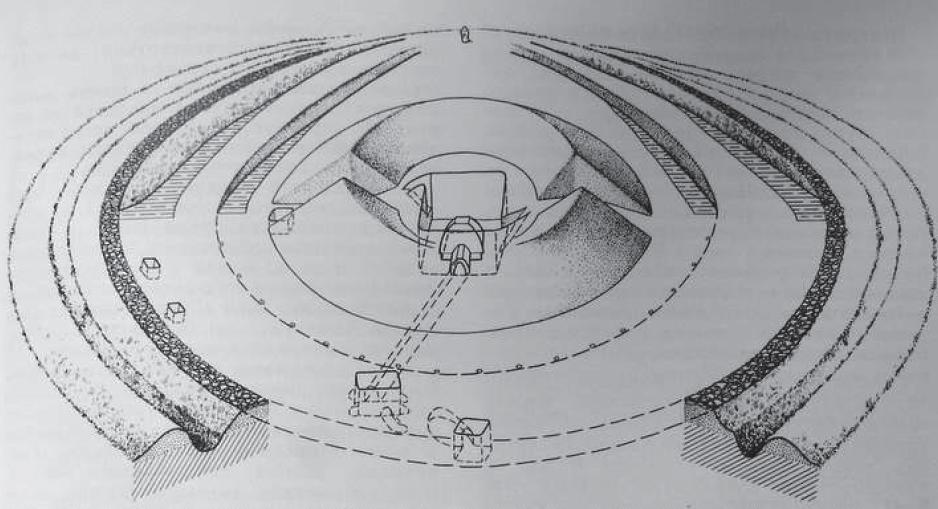With 20m in height, Oguz was the second-largest Scythian barrow situated in the lower Dnieper area. Alexandropol Kurgan was the first with 24m, Chertomlyk (19m), and Solokha (18m) were the next in the ‘Big Barrows’ group. It was the most southern barrow of the four as well. The major difference from the other three barrows in the group was that Oguz had a stone corbelled vault inside. According to E. Minns, the interior of it was “21 ft. square, surrounded and upheld by a solid mass of stone work 50 feet square. The stones of the corbelled vault itself were bound by iron clamps”. The tomb had been rifled long ago, and because the plunderers could do their work much more effectually in the stone vault than in unlined earthen pits, there was very little left behind them. According to E. Minns, “at the sides of the great stone mass were small niches; in the eastern one, nothing was found. In the northern one was a woman’s skeleton with a mirror and one or two poor ornaments. In the niche to the west, lay two skeletons with no objects but a bronze earring. At the entrance of the main vault lay a man’s skeleton with a long spear, an iron knife, and bronze and bone arrow-heads. He seems to have been as it were a sentry outside the tomb…”
Author’s comment on who could be buried in the Oguz barrow: The stone vault in itself points to a different burial practice than in other large barrows, which can be explained that the person(s) buried in it belonged to a different royal dynasty and, judging by the size of the barrow, very prominent one. The complexity of building the stone chamber made archaeologists believe that “such a work as the stone vault must have been built in the king’s lifetime though the heap may have been raised after his death”. The most famous stone vault discovered was the Kul Oba in present-day Crimea. The scholars believe that Leukon I was buried in it. Oguz barrow is a later construction than Kul Oba and could be built by one of Leukon’s descendants. (Thus it may be not a coincidence that the Oguz barrow is the closest of the ‘Big Four’ from the ‘Dnieper group’ to Crimea.)
If we take into consideration the time and effort that was necessary to build the Oguz vault and the timeframe when Oguz barrow was completed, it appears that the most likely candidate is the famous son of Leukon I, Paerisades I. What was he famous for? Historian Polyaenus in his “Stratagems of War” wrote:
Paerisades, king of Pontus, used three distinct outfits of clothing on different occasions: one when he reviewed his troops, another in time of battle, and a third when he was forced to take flight. The reasons he gave for this custom were as follows: at a review, he wished to be known by every individual in his army; in battle, he wished not to be known by the enemy; and when he was forced to take flight, he wished to be known by no-one.
Little-known facts about Leukon I and the Kul Oba artifacts are in the “Royal Scythia, Greece, Kyiv Rus” book.
